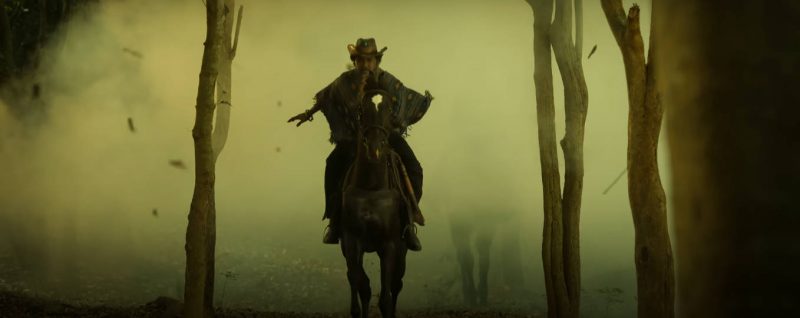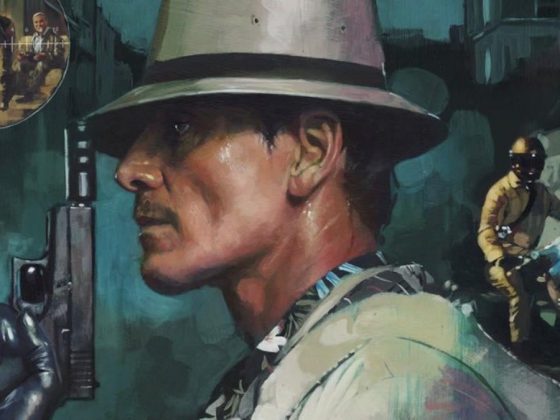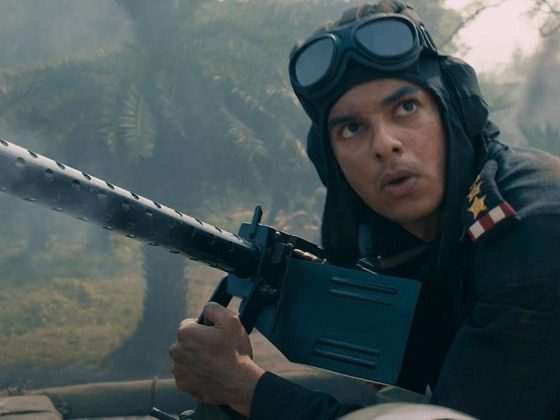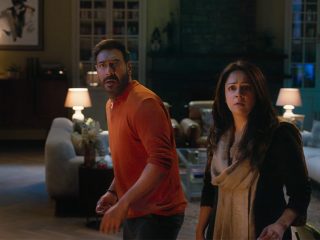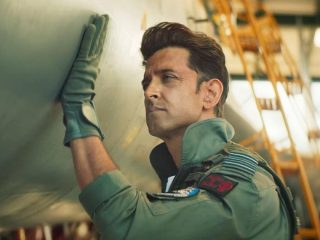The “Jigarthanda” Effect:
The late 2000s and early 2010s Tamil reality TV show, “Naalaya Iyakkunar”, involved searching around for aspiring young filmmakers which spawned a whole new crop of feature films in the upcoming years. Among the crop of these filmmakers was Karthik Subbaraj, whose debut low-budget horror thriller, “Pizza”, made huge waves across tamil cinema back in 2012. When everyone thought he would make another horror film, Subbaraj in 2014 made “Jigarthanda”. Marketed as ‘Gangster musical story’, the film was a blockbuster hit which broke the age-old tamil cinema curse that films about filmmaking would always flop.
But the film was lauded for its quirkiness and out-of-the-box storytelling choices in the conventional masala cinema template. Over the years, Subbaraj has been making an indelible mark with his works, and now has comeback again to the big screens after three years. “Jigarthanda Double X” marks as a spiritual successor to his 2014 sleeper hit. Let’s see if it had the “jigar” and “vigor” the former had.
Retaining the “Jigar” Spirit:
Most Indian sequels in the recent times have been carved off from the sheet of their originals – films that didn’t necessarily even have a room for a sequel in the first place. With a film that has a cult fanbase as “Jigarthanda”, the announcement of sequel ruffled a lot of feathers amongst the fans with a fear that it would be attempt at cashgrab. But soon with the teaser, Subbaraj clarified that the film would strictly serve as a spiritual sequel to the 2014 hit.
“Jigarthanda Double X” is set in the retro ‘70s at Madurai revolving around Ray Das aka Kirubai (SJ Suryah) an undercover Police officer who poses as a filmmaker to hunt down Allian Caesar (Raghava Lawrence) a ruthless gangster and what progresses is a journey of self-discovery for both the characters. The production scale is doubled, so are the emotions; everything is amped up to double from its predecessor, thus retaining the “Jigar” spirit. With the rustic teal tinted frames by S.Thirunavakkarsu (longtime collaborator of Karthik Subbaraj, “Jigarthanda Double X” registers to the audience from its first frame to the last how it’d be a tonally different film from its predecessor. The meticulous art design by Balasubramanian and the costume design by Praveen Raja gives a great authenticity to the retro-timeline, thus totally justifying the grandiose tone.
The “DoubleX” Duo:
The duo of Gangster ‘Assault’ Sethu (Bobby Simha) and Filmmaker Karthik Subramani (Siddharth) from the first “Jigarthanda” became a part of Tamil pop culture. Thr depiction of their contrasting personalities makes these characters still remain fresh in people’s mind. Here we have Allian Caesar – a ruthless gangster involved in Elephant tusk trade in Madurai – who is fearless and lives like there is no tomorrow. On the other hand, there is Kirubai, aka Ray Das, who gets seizures when he sees blood and is filled with timidness. Despite their distinct quirks they join at one common point – cinema. Actors Raghava Lawrence and SJ Suryah both deliver a competitive performances and perfectly don the suit of both the characters. An interesting aspect is the way in which SJ Surya presents a clear variation between both the personalities of Kirubai and Ray Das making it stunning. Subbaraj puts both these characters into the play and delivers a narrative filled with ironies and tension. The camera of Thirunnavukkarasu uses a wide range of arc shots and dolly zooms combined with cuts by Shafique Mohammed Ali to capture the dichotomy of this ‘DoubleX’ duo.
The “Jigar” Blend:
Filmmaker Subbaraj is widely known for his seamless genre blends. While some for example like the Horror-Heist blend in “Pizza”, Gangster-Comedy blend in “Jigarthanda”, Crime-Drama blend in “Iraivi” worked bigtime, the blends in “Jagame Thanthiram” and “Mahaan” worked in parts. This time with “Jigarthanda DoubleX”, the filmmaker blends not just two but a plethora of genres and sub-genres here and there.
Starting off with a Departed-styled cat-and-mouse thriller to quirky comedy to curry-western adventure to social drama providing a harmonious genre blend. The rustic teal filled towns of Madurai in the first half suddenly shift to greenish terrains of Komban Malai Forests, clearly presenting a dichotomy between the two settings. The complexity of the first half is streamlined into a clear and coherent second half, which is all anchored by great emotional beats. It explores the lives of the natives of the forests and the exploitation of them by the police – particularly by Officer Rathna Kumar played by a menacing Naveen Chandra. The commentary in these portions don’t seem off the place but seamlessly gel with the narrative Despite the film containing action set-pieces here and there, the most memorable moments remain the emotional and adventurous ones. They’re also the ones that show the caliber the writer has earned his reputation out of in the current landscape of masala films.
The “Pandyaa” Western:
We know how the genre of Spaghetti Western got so influential, especially with the Dollars Trilogy by Sergio Leone that had took a storm across the globe. The very genre inevitably poured into the Indian cinematic landscape of the 60s and 70s, spawning a new genre in India called ‘Curry western’. Multiple Jaishankar starrers and Ramesh Sippy’s “Sholay” became landmarks in their respective languages.
From its pulpy title font to the ‘70s styled animated title card, “Jigarthanda DoubleX” clearly makes itself a love letter to the Western genre. The film presents the theatre craze that those films had spelled through the 70s. With the central protagonist, Allian Caesar, sketched as a Clint Eastwood fan, Subbaraj infuses the legendary actor and his iconic Mexican standoffs into the narrative by carving setups and payoffs that feel supremely rewarding. Just like the Dollars trilogy, the second half of the film too follows the ‘hero’s journey’ structure. In doing so, it also delivers a western adventure set in the Kombanmalai forests. The soundscape of Santhosh Narayan is blended with the spirit of Madurai and the epic orchestral overtunes of the Western, making a fitting tribute to the musical genius of Ennio Morriccone.
Ode To The Celluloid:
Subbaraj’s venture into carving out projects about ‘films on films’ tend to have a meta-quality to it. By setting his latest in the ‘70s (that too in an alternate Tamil Nadu), the film has got direct as well as indirect parallelism with the political cinema landscape of those times. The film’s first half functions itself as ‘70s action film, one that even the character of Ray Das stealthily takes a dig on. As Ray Das’ character takes charge of the narrative as the second half begins, you realize just how cleverly placed the meta-moments in the movie feel. The inventive interval block sees Allian Caesar hold a 9mm gun, while Ray Das holds an 8mm Canon Camera facing off. But little do they know that only one device’s purpose of shooting will make them discover the purpose of their journey. Both the “Jigarthanda” films examine the impact of art in oneself. But in this spiritual sequel, it goes beyond showing what the impact of art is for the greater good. The film even takes a dig on modern Indian masala films with dialogues like “no one watches films with noblemen as protagonists”. This meta-quality of “Jigarthanda DoubleX” doesn’t really fizzle out the emotions. Instead, it’s this very quality that gives its narrative the economy to have an effective last act.
While the celluloid of “Jigarthanda DoubleX” is strong, it does have some dust here and there. The characters of Nimisha Sajayan, Naveen Chandra and Illavarasu make a lasting impression. But most of the other characters never get fully registered in our minds. Some tropes used in the film might seem a bit tiring for some viewers. The CGI at certain portions feels a bit uncanny. In a country like India, cinema culture has influenced almost each and every major historical event, and “Jigarthanda DoubleX” poses itself as a great ode to this celluloid medium that has been captivating human senses for the last 100 years. In that regard, Karthik Subbaraj has seemingly proved it yet again.

